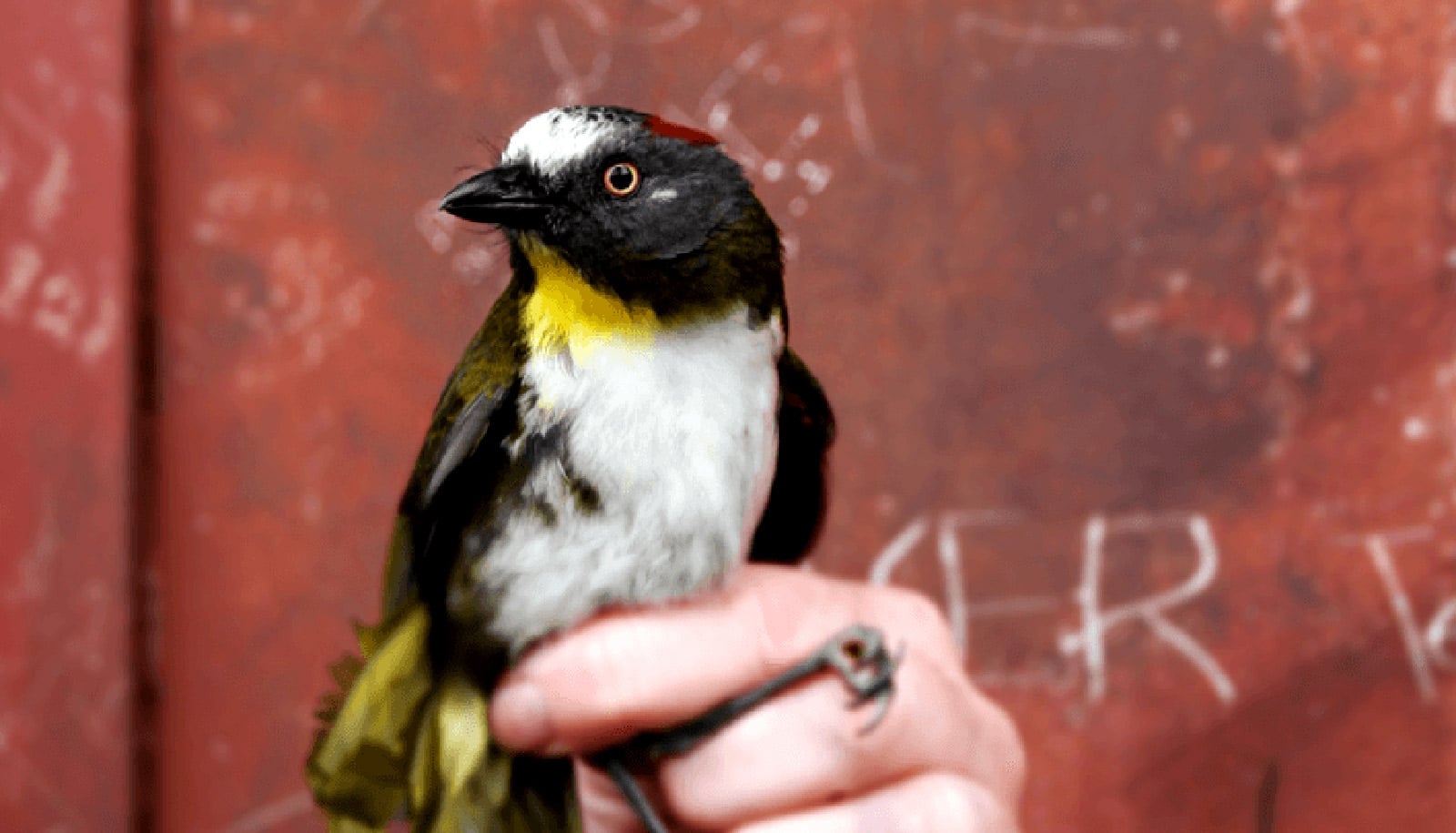A new material replicates the structure responsible for the blue feathers of eastern bluebirds and other songbirds. The new material could be used in batteries or filtration.
The blue color of the eastern bluebird doesn’t come from pigments but from the special structure of the feather. Viewed under the microscope, the feathers are traversed by a network of channels with a diameter of just a few hundred nanometers. By way of classification, a nanometer is a billionth of a meter.
The blue of the bluebird came to the attention of ETH Zurich researchers from the Laboratory of Soft and Living Materials led by former ETH professor Eric Dufresne. So much so that they decided to replicate this material in the laboratory. They have now succeeded with a new method: they have developed a material that exhibits the same structural design of the bluebird feathers, while offering potential for practical applications thanks to its nanonetworks.
The researchers used as a starting material a transparent silicone rubber that can be stretched and deformed. The scientists placed this rubber in an oily solution and left it to swell for several days in an oven at temperatures of 60 degrees Celsius (140 degrees Fahrenheit). They then cooled it and extracted the rubber from the oily solution.
The researchers were able to observe under the microscope how the nanostructure of the rubber had changed during the procedure, and they identified similar network structures to those that give the bluebird feather its blue color. The main difference is the thickness of the channels formed—the bird’s feather measured approximately 200 nanometers and the synthetic material 800 nanometers.
The principle behind the network formation is phase separation. This phenomenon can be observed in the kitchen with a salad dressing made of oil and vinegar. Mixing the two liquids is not easy and is best achieved by shaking vigorously. The liquids separate again as soon as the shaking stops. However, it is also possible to mix them by means of heating and then cooling them again to separate them. This is precisely the principle the researchers applied to mix the silicone rubber and oily solution. This resulted in the formation of an entire microscopic network of channels inside the rubber.
“We are able to control and select the conditions in such a way that channels are formed during phase separation,” says lead author Carla Fernández Rico. “We have succeeded in halting the procedure before the two phases merge with each other completely again.” This channel-like structure is very similar to the structure of the bird’s feathers.
The advantage of this new method is that the new material is several centimeters in size and remains scalable. “In principle you could use a piece of rubbery plastic of any size. However, you’d then also need correspondingly large containers and ovens,” says Fernández Rico.
The novelty of this material processing method is generating a lot of interest in the physics community. “We have a simple system made of only two ingredients, but the final structure obtained is very complex and controlled by the properties of the ingredients,” says Fernández Rico. “We have been approached by several theoretical groups that are proposing the use of physical models in order to understand the key physical principles of this new process and to predict its outcome.”
The new material offers potential for technical and sustainable applications. Batteries are one possible field of application. Ions in batteries typically move between electrodes through a liquid called the electrolyte. One of the main reasons batteries lose their charging capacity over time, or even end up failing, is because the ions react with the liquid electrolyte, which causes the two electrodes to establish physical contact and damage the battery. Liquid electrolytes could be replaced by solid electrolytes with a network structure of interconnected channels—such as the one shown by the researchers, which would avoid physical contact between electrodes, while maintaining good ion transport through the battery.
Water filters could be another application. Good transport properties across the interconnected channels and large surface areas are advantageous here. The ratio of surface to volume is enormous in the case of channel-like structures. This enables the efficient removal of contaminants such as bacteria or other particles from water.
“However, the product is still a long way from being ready for market,” says Fernández Rico. “While the rubbery material is cheap and easy to obtain, the oily phase is quite expensive. A less expensive pair of materials would be required here.”
Fernández Rico wishes to develop her future research with a view to sustainability: “Many natural polymers, such as cellulose or chitin, have a structure similar to the rubber used in our work.” However, working with a natural material such as cellulose is (more) environmentally friendly than with silicone rubbers derived from petroleum. The postdoctoral researcher therefore wishes to find out in future how such materials can be made more functional to exploit their potential.
The findings appear in Nature Materials.
Source: Deborah Kyburz for ETH Zurich



